Move 2023 Undisciplined bodies / Wondrous demons
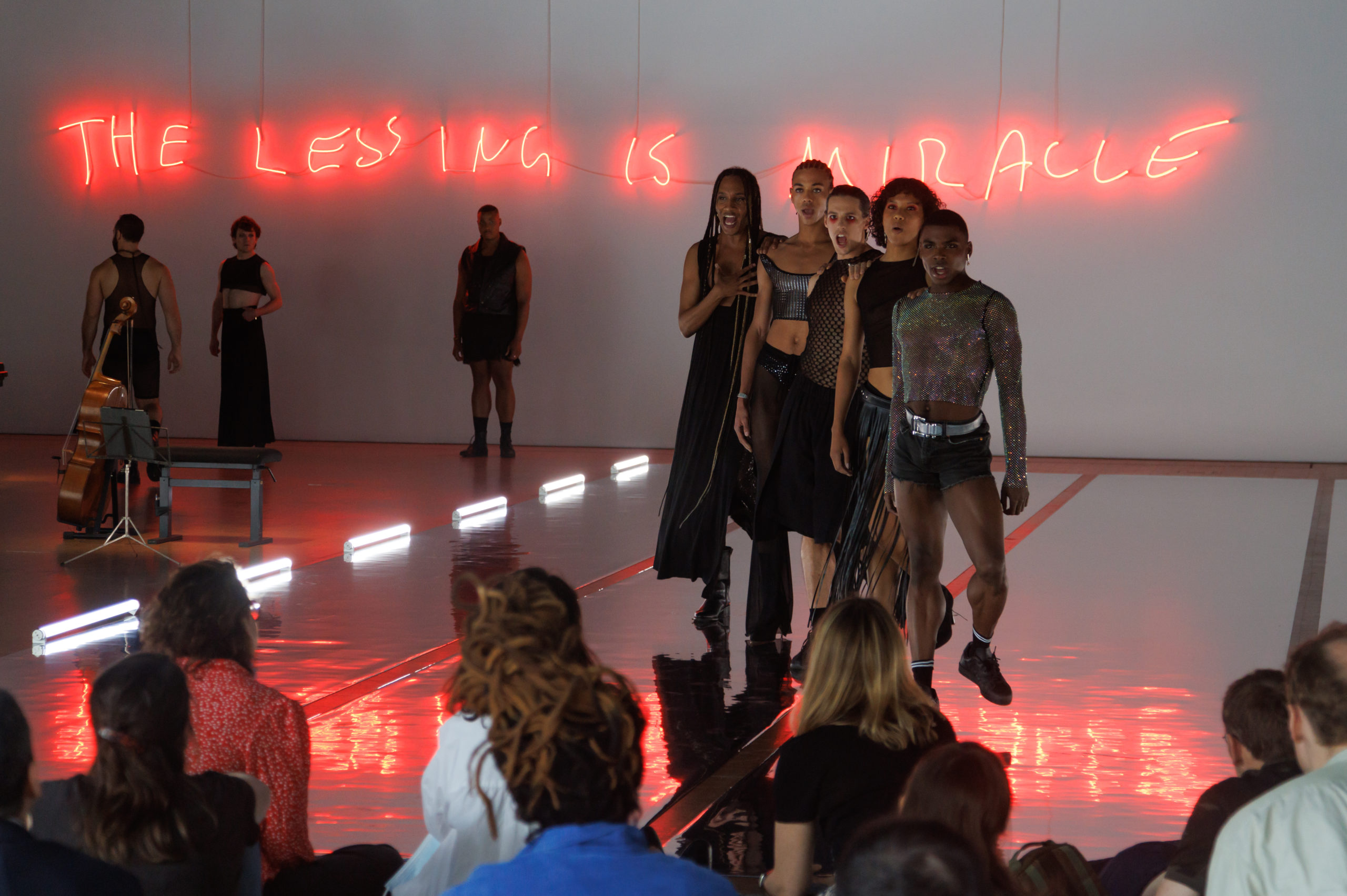
Centre Pompidou
15 Jun – 2 Jul 2023
Alexandra Bachzetsis, Lara Dâmaso, Dorota Gawęda & Eglė Kulbokaitė, Gerard & Kelly, Natasza Gerlach, Sophie Jung, Marijke de Roover
The Move festival at Centre Pompidou, curated by Caroline Ferreira, revolves around the ever more asserted premise: to speak, move, hope, and project without reservation. The festival’s carefully selected program features predominantly female artists, reflecting a bold political and intellectual stance. By giving thought and space to marginalized bodies, the festival embraces an active role in advocating for underprivileged individuals. The edition’s title, derived from a quote in Helene Cixous’s essay “Le sexe ou la tête” references women experiencing hysteria as “wondrous demons.” It is by no means a surprise that this 1976 text could serve as a valuable handbook to reading the entire festival, understanding the body beyond the confines of cis-male norms, and viewing it as a precious tool for those who choose to live outside preconceived and manufactured traditions.
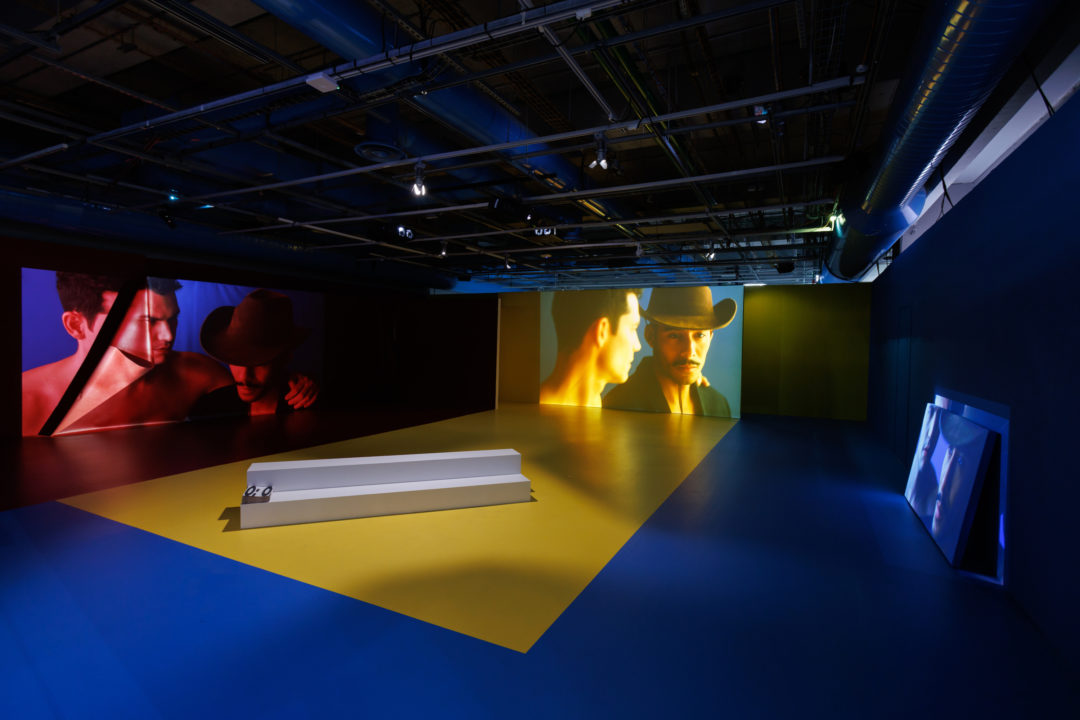
Wondrous demons
“The hysteric is a wondrous demon that is always at the edge, the turning point, of making. She is one that does not make herself… she does not make herself, but she does make the other.”
We will begin with a part of the Move festival which is an invitation to transcend the confines of an orderly and predictable binary approach to reality and conventional behavior. Questioning modern-day societal norms and traditions, the artists delve into alternative ways of existence, movement, sounds, and appearance. The festival exposes the limitations of a binary mindset of the notion of the couple – man and woman – based on pure opposition, deeply ingrained in the Judeo-Christian tradition, where the dichotomy between good and bad is reinforced. Those supporting the norms dictated by a male-dominated societal system are often labeled as normal, good, angelic and godly, on the opposite, those who deviate are designated as abnormal, non-conforming, bad, or demonic. Needless to say, the festival celebrates precisely these individuals, reclaiming the aforementioned terms outside the realm of judgmental value systems and recognizing them as wondrous qualities.
Lara Damaso’s performance within her in situ installation, Gravity and Grace, invites the audience to witness her move within the space on a predefined trajectory, guided by the lines formed by the sewn-together curtains. Her voice, raw and resonant, emanates from the depths of her being, intertwining with instinctual, carnal movements. In a circular movement, she breathes the space in and out. Damaso’s exploration does not simply question normality and norms; instead, she praises the essence of our shared humanity. Her costume constructed as a continuation of the fabric installation reveal parts of her naked body, confronting the notion of seduction. Her female body comes as the symbol of womanhood, fertility, procreation, transformation, yet by no means evokes any lack. It transpires with a sense of unity and completion, a sort of human harmony. As she moves amidst the crowds, and while allowing room for the public she simultaneously carves out her own space, symbolizing the fair-minded struggle for a room of one’s own according to Virginia Woolf’s renowned title.
Similarly to Damaso’s work, Natasza Gerlach’s piece Eventfully Tender is immersive yet not participative. It stages four performers constantly navigating the space in an ongoing negotiation in between themselves and the others. Revolving around the ideas of empathy, tenderness, and intimacy, the performers occupy the space and divide their responsibilities and presence. With diverse aesthetics and technical qualities, they manipulate the tension and energy within the room, shaping the entire spectacle around their collective actions. This responsibility extends also to the spectators, who must choose their own vantage point, recognizing that focusing on one fragment of the play limits their observation of others.
Adopting an East-block aesthetic, characterized by black and white palettes and materials such as latex, polyester, and cotton, Gerlach’s performers erase binary gender differences. On the verge of the sublime, they embody both beauty and fright. Their pupil-less eyes and slow-motion, tensed movements evoke survivors in a post-apocalyptic or parallel reality. The climax of the performance unfolds as a ceremony of closeness, where performers assist one another in removing covers from their eyes, allowing them to finally see. A symbolic change of state, the characters acquire the sense of sight through the tender touch of their peers.
The performance follows a predefined narrative structure that serves as an abstract play, an open canvas inviting external projection. Accompanied by penetrating music, the choreography provides enough tangible elements to anchor the viewer to the story.
The general idea of transformation, even transmutation through an by the other, and more specifically that of the transgression of multiple realities with one’s body is further developed by Dorota Gawęda & Eglė Kulbokaitė’s play BROOD. Its performers trespass time and space and hunt the spaces of the Centre Pompidou over the course of a day. Intermixing their identities, with horns protruding from their faces, they embody otherworldly beings conversing with invisible entities and singing in polyphonic voices inspired by Lithuanian and Greek folk traditions. The duo’s installation, SULK, explores deeper the notion of simultaneous existence. Transparent glass and metal panels resembling unusual doors offer glimpses into a different world, while a sci-fi-inspired object at the entrance acts as a futuristic remote control for a ship traveling through space and time. Permeating the space, a peculiar scent instinctually transcends us somewhere else, beyond the confines of the Centre Pompidou. Later revealed as remnants from a previous performance, the folding screens and the specially crafted perfume, replicating the fragrance of another space, serve as relics of the past.
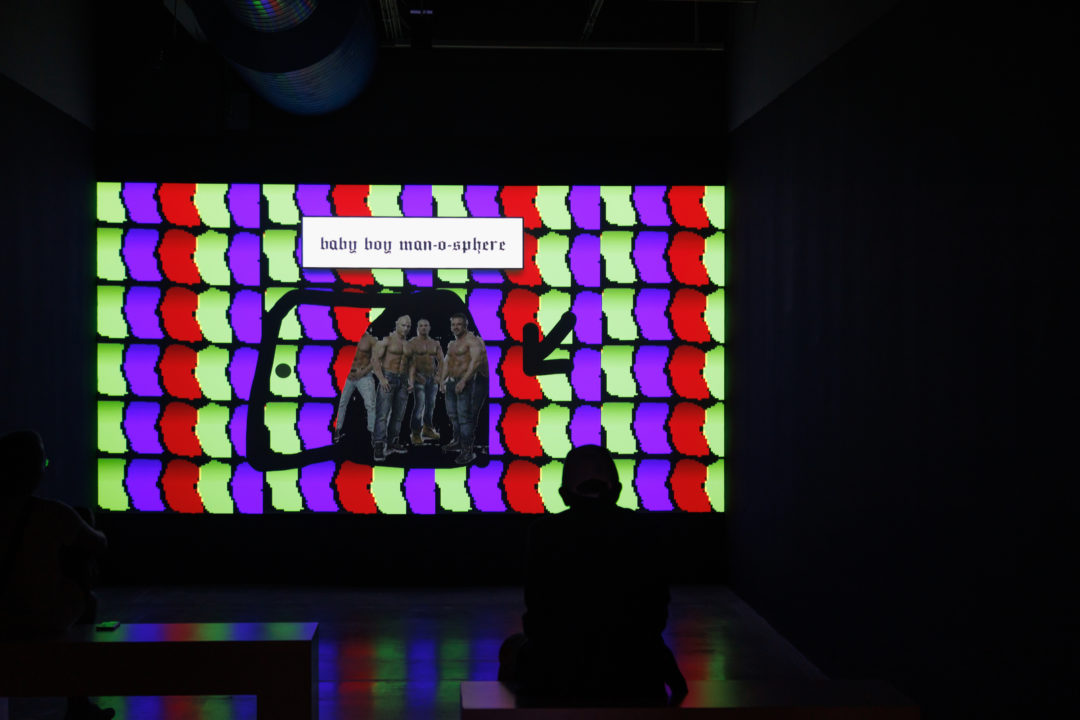
Affirming the difference
“Women have it in them to organise this regeneration, this vitalisation of the other, of otherness in its entirety. They have it in the to affirm the difference, their difference, such that nothing can destroy that difference, rather that it might be affirmed, affirmed to the point of strangeness.”
Cixous acknowledges women as necessarily different within a male-dominated society, pioneers in a struggle now encompassing the entire queer community. That said, escaping the complex web of a cis-male-dominated culture through exclusion is not viable, not even desirable, for those seeking precisely inclusion within society. Erasing or altering the past rids us of key values embodied in our existence, thus creating gaps ultimately leading to shaky foundations. It is in this context that certain artists prefer transforming and reinterpreting existing archetypes, proposing a different outcome based on familiar circumstances. For instance, both Alexandra Bachzetsis and Sophie Jung challenge the archetype of the reclining woman, liberating her from passivity and empowering her with independent thoughts and intentions. In Bachzetsis’ three-channel video installation, 2020:Obscene, various figures, both female and male, are depicted lying down, including the artist herself. However, the portrayal of the reclining woman is dynamic, actively turning and standing, moving and walking. The three screens display an ongoing sequence of scenes, each accompanied by its own music and colors. With slight time-lags, these screens position the viewer slightly ahead or behind the action, while one screen is locates the viewers gaze behind the camera. This arrangement creates an immersive experience, where the viewer is given the illusion of being involved as an active observer within the filming crew, able to intervene and control the action by saying “CUT” at any moment.
Similarly, Sophie Jung begins her performance “Woman in an Exterieur (The Pisser)” laying down on a reclining chair in the midst of the 5th-floor permanent modern masters collection at the Centre Pompidou. Portraying the nude character Frau Welt, she embodies the omnipresent muse depicted in many artworks within the collection. However, she disrupts the conventional narrative by actually taking the microphone and speaking. What would a muse say of her private collection if given the opportunity? Her speech is rapid and articulate, revealing stories and secrets that guide the viewer through works by artists such as Picasso, Le Corbusier, Otto Dix, Man Ray, Balthus, and more. With an intricate use of wordplay, Jung transforms the speech in Lacanian terms, unearthing new meanings in established sentences. She discusses loneliness, museums as crypts, bodies to be displayed and played, of touching and especially no touching, insurrection, erection, correction, collection, cumlection.
Both artists, Jung and Bachzetsis subvert the notion of the male gaze and challenge the overall gaze within the history of art, without searching for new targets to observe but themselves, gradually transforming into anti-muses.
Gerard & Kelly offer a distinct, yet aligned perspective with the principles of affirming difference, through their remarkable staging of an opera-ballet based on Julius Eastman’s composition, “Gay Guerilla.” The performance serves as an activation of an existing installation situated in Gallery 3, featuring three pianos, two cellos, floor and wall neon light installations, as well as works on paper. Eastman, an openly gay black man, fervently sought a place within a world that often rejected individuals like him, paralleling the efforts of Sophie Jung and Alexandra Bachzetsis in carving their own space within an art world dominated by male principles. Guided by Gerard & Kelly, classically trained dancers embody Eastman’s music and persona, evoking a sense of wildness, grandeur, delirium, and even the demonic. Simultaneously, the play creates a space for care, pleasure, reciprocity, and touch, offering an experience that is both transformative and nurturing.
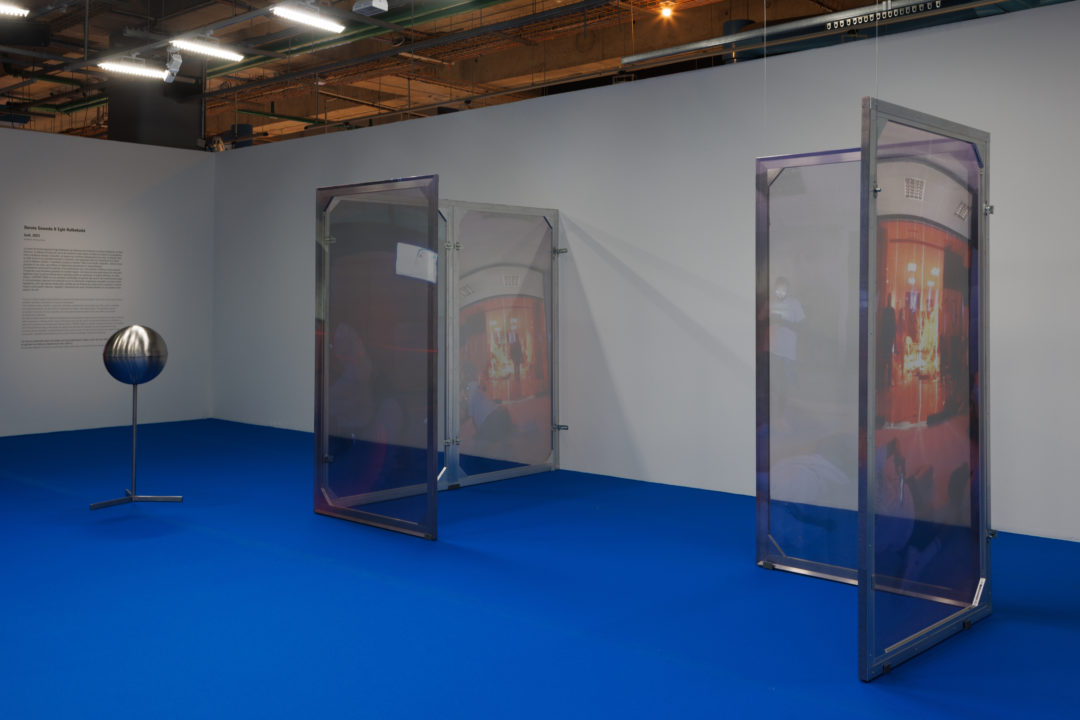
Laugh
“Laughter that breaks out, overflows, a humour no one would expect to find in women — which is nonetheless surely their greatest strength because it’s a humour that sees a man much further away than he has ever been seen.”
A strong laugh is neither nervous nor mocking, it is taking ownership of a situation that has been apprehended and understood. A laugh is a punctuation mark in a narration, it is an open door to viewing things from a distance. Marijke de Roover’s work Cum As Your Madness is a strong commentary on the treatment of women through the witch trial periods and its repercussions on our present-day cross-gender correspondence. At the same time, the work is interlaced with pornographic scenes, depicting consented BDSM moments. Subtly, the artist opens a discussion about violence and aggression, as what seems a metaphor of non-conventional sexual practices, especially when they touch the sacred interpretation of holy womanhood. Often perceived as male qualities, they are in fact a release of strength, tension, and energy, qualities incompatible with the women in the past, which provoked fear and eventually repression.
Constructed as a recorded video game, the main character travels from point to point to reveal various locations and aspects to be accessed through play. Wholeheartedly embracing humour, the artist is allowing the viewer to take a step back and apprehend the information in a more neutral way, away from pathos and emotion. Under the guise of ironic lightness, the artist is able to send across sizeable amounts of information. The shock comes as an aftermath, leaving the viewer with a profound realization that laughter can be both a shield and a weapon, capable of dismantling societal norms and igniting critical introspection.
1 Cixous, Hélène, and Annette Kuhn. “Castration or Decapitation?” Signs, vol. 7, no. 1, 1981, pp. 41–55. JSTOR, http://www.jstor.org/stable/3173505. Accessed 12 July 2023.
2 Ibid.
3 Ibid.
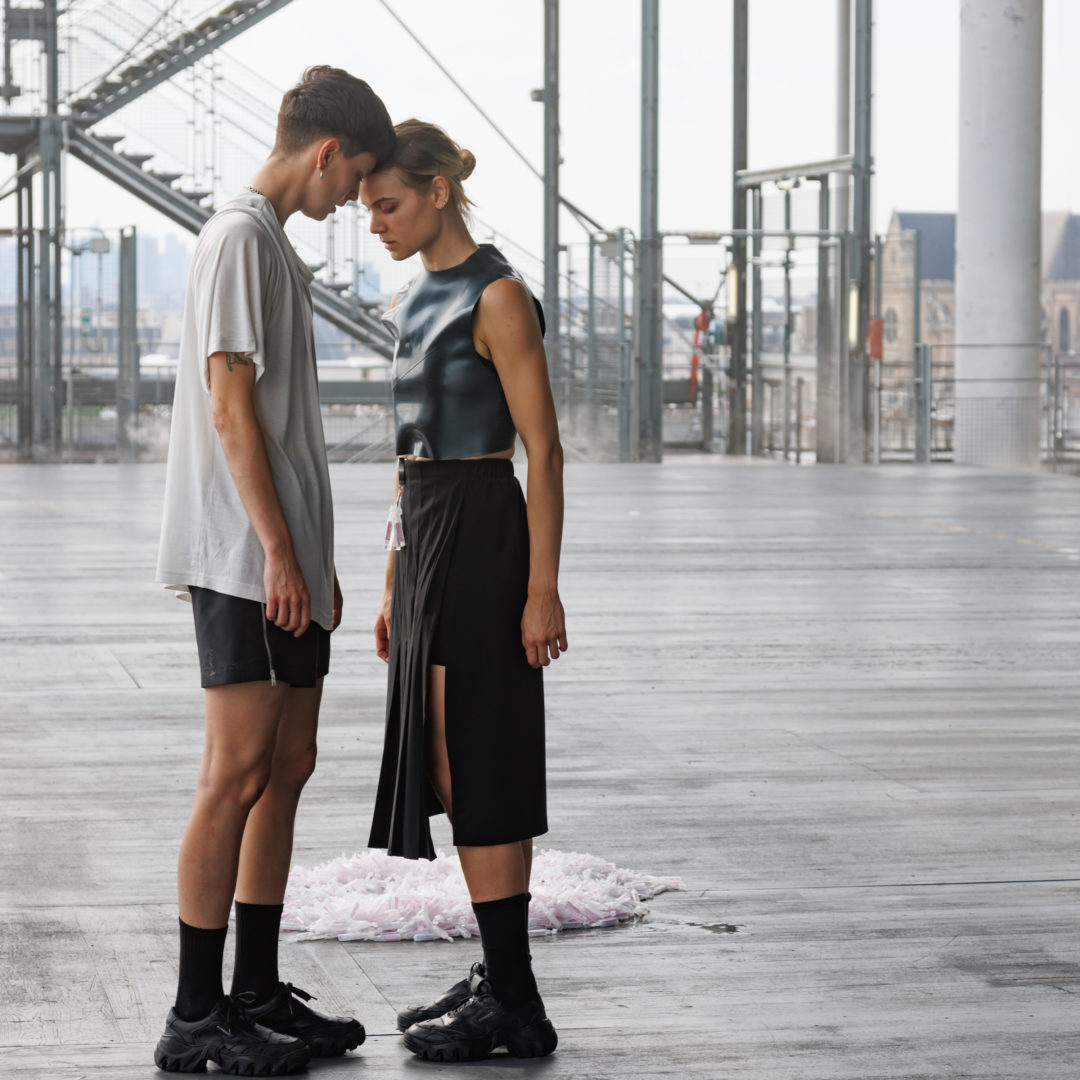
______________________________________________________________________________
Head image : Gerard & Kelly, Gay Guerrilla, Festivals Move et Moviment, Centre Pompidou. © Herve Veronese
- From the issue: 104
- Share: ,
- By the same author: The summer of collaboration at CRAC Alsace and CRÉDAC: “L’amitié : ce tremble” and "Tripple Dribble", Jonathan Binet at Balice Hertling gallery, Radek Brousil at Stone Bell House, Prague, Unbound : Performance as Rupture at the Julia Stoschek Foundation, Berlin, Jean-Marie Appriou at Eva Presenhuber Gallery,
Related articles
Lyon Biennial
by Patrice Joly
Not Everything is Given, Whitney ISP, New York
by Warren Neidich
Rafaela Lopez at Forum Meyrin
by Guillaume Lasserre

